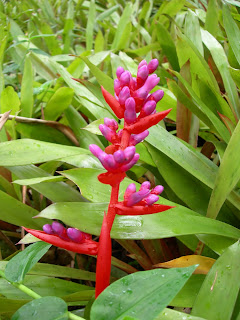Everyone told me to avoid Costa Rica's capital city, San Jose. "Oh just skip it, its loud, busy, dirty and dangerous!"
Oh ok. Sounds like every major city in Latin America. Advice appreciated but rejected. And I'm glad I didn't listen. 60% of Costa Rica's population live in and around San Jose. It seemed to me that if I wanted first hand experience with the real people of Costa Rica I would need to spend some time in San Jose. This is one of the main reasons I travel outside the US.
San Jose is absolutely loud, dirty and busy, so there was no disappointment there. Dangerous? More so than Dallas or Houston, less so than Rio or Mexico City. I followed common sense rules for travel and had no bad experiences. However, I would not recommend walking long distances in the city at night alone if you don't know Spanish very well; petty theft is relatively common downtown.
Downtown San Jose has a density of museums which can be seen in one day on foot. This is a nice way to spend either the first or last day in the country. The history of Costa Rica is very well documented in these museums and they will give you a clear understanding of Tico culture. I particularly liked the Pre-Colombian Gold, Jade and National Museums.
 Museo National, San Jose, Costa Rica
Museo National, San Jose, Costa Rica Museo National is located in an old bullet ridden fort, an artifact from the country's civil war in 1948. Ironically housed, since Costa Rica no longer has a military. It is the most comprehensive collection of art and history, if you only have time for one museum.
 Museo National, San Jose, Costa Rica
Museo National, San Jose, Costa Rica Downtown proved to be the best place to find the typical Costa Rican meals. Sodas (small takeaway restaurants) were gold mine for me. I could get the national dish of casado or arroz con pollo for about $3. My meals in San Jose for 4 days were less than $35, and they were extremely good!
Two steps away from the busiest square is the stately and peaceful Gran Hotel de Costa Rica. A wonderful place to momentarily escape the rush-rush and just sip a cup of coffee.

 Gran Hotel de Costa Rica, Downtown San Jose
Gran Hotel de Costa Rica, Downtown San Jose I learned in San Jose that Costa Rican men have a full contact culture. By that I mean they will take every opportunity to touch you. I found it typical for them to grab my arm or thigh while talking to me. I also experienced arms draped around my shoulders, pats on the butt, light pinches and hugs that last a little too long by North American standards. None of this was a come on, its just the way they are.
Also, I learned there is a small but visible Chinese population in Costa Rica, I think they immigrated in the 40's and 50's. I saw the second and third generation of these immigrants wandering around town. I found it very disarming to see people of Chinese ancestry speaking beautiful Spanish. I don't know why that surprised me, I mean it is their native language. A bonus, great Chinese food in Costa Rica, not something I expected in Central America!
Labels: Costa Rica, San Jose



































































